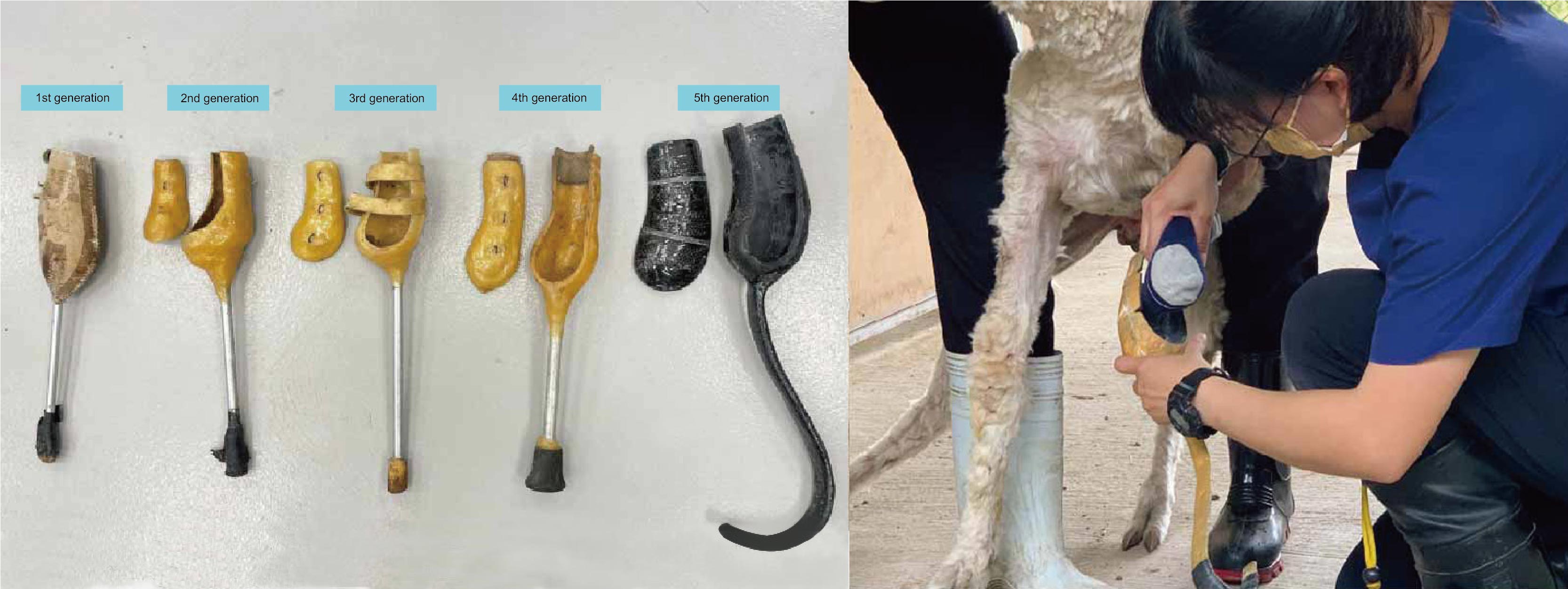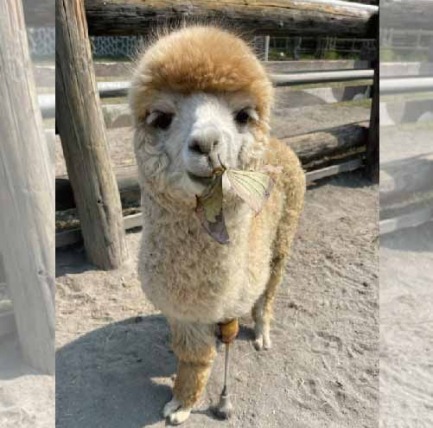Welcoming the Newborn - "Ange" the Alpaca and Its Unexpected Condition
An alpaca was born in the middle of September 2020, under the veil of night. The next morning, during their routine morning rounds, the keepers stumbled upon the newborn in the enclosure. Excitement quickly turned into concern as they noticed a severe injury on the little one's left front leg. They named him Ange. Despite several treatments by the vet team, Ange's front limb showed little improvement. With the limb shriveled and unable to bear weight, Ange could only hobble around. To prevent his front leg from atrophying, and avoid wound infection, the vet team made the tough decision to amputate the injured leg so that Ange could survive. Thanks to the expert care of the vet team and the dedicated attention of the keepers, Ange recovered swiftly after the surgery. As he grew older, efforts were made to help him overcome the challenges of moving with three legs and prevent muscle atrophy. This involved a series of experiments with prosthetics to give Ange a chance for a normal and mobile life.

Ange's Continuous Growth and Its Ever-Evolving Prosthetics
This marks the first time the Wanpi World vet team has to face the challenge of creating prosthetics. Despite lacking practical experience, under the leadership of Chih-Hua Chang, the Deputy General Manager of the Animal Department, the team managed to craft handmade prosthetics after several rounds of modification and adjustment.
When Ange first put on a prosthetic, he seemed a bit bewildered. Having his foreleg supported suddenly appeared unfamiliar at first, but it didn't take long for him to stand steadily and find his balance. Ange began to walk forward, though a bit wobbly. Nonetheless, it was a significant improvement from his original condition, and the veterinarians were greatly encouraged! What's more, Ange didn't attempt to shake off or resist the prosthetics, much to the team's delight. Despite being soft and comfortable to the touch, since the first-generation prosthetic was made of leather, they lacked sufficient support. Walking was still somewhat challenging. So, the vet team started to develop the second-generation prosthetic made of fiberglass. The second-generation prosthetic indeed provided better support, allowing Ange to walk and run more smoothly. Yet, the team wasn't entirely satisfied and aimed for even greater flexibility with the prosthetic. Thus, they crafted the latest version using lighter carbon fiber material, which is what Ange's current prosthetic is using.
In addition to the hardware material, the appearance and structure of Ange's prosthetics have also undergone continuous adjustments. The third-generation prosthetic mimics the elastic hook design used in extreme sports. This design increases ground contact points and landing flexibility. So, Ange can move around more easily and feel more relaxed wearing them. As Ange continues to grow, the vet team keeps adjusting the prosthetics to fit his size to help him live like a regular alpaca.

Ange is adapting well and living comfortably
In fact, besides missing one leg, Ange is very healthy in other aspects. After getting his prosthetic, he's been growing up smoothly. He not only walks, runs, and jumps like any other alpaca, but also rolls around on the ground like a playful and curious baby. Alpacas are known for their strong social bonds within a herd. They help each other out, especially those who are less able. Ange gets along well with other alpacas and hasn't felt left out or pushed aside. The overall situation puts everyone at ease. For the vet team, the experience of making prosthetics for the first time, from treating injuries, performing amputations, assisting in post-surgery recovery, to making prosthetics and continuously refining their techniques, has been an emotional journey.
The keepers in the zoo share the same sentiment: "We want to accompany the animals, watching them grow up healthy and safe." As long as the animals they care for are safe and sound, and they can contribute to their well-being, they have accomplished what they set out to do and. It is the only mission in serving at the zoo. They don't ask for anything more than that.


